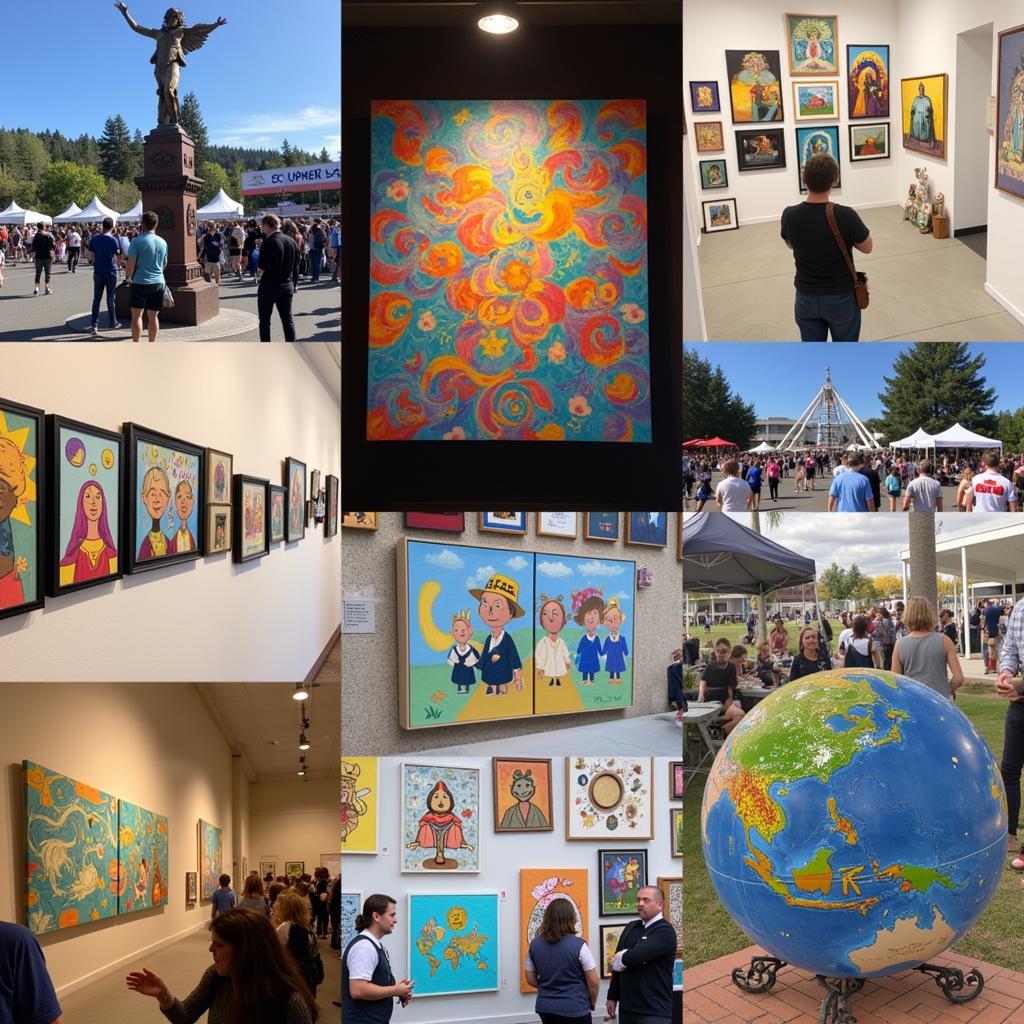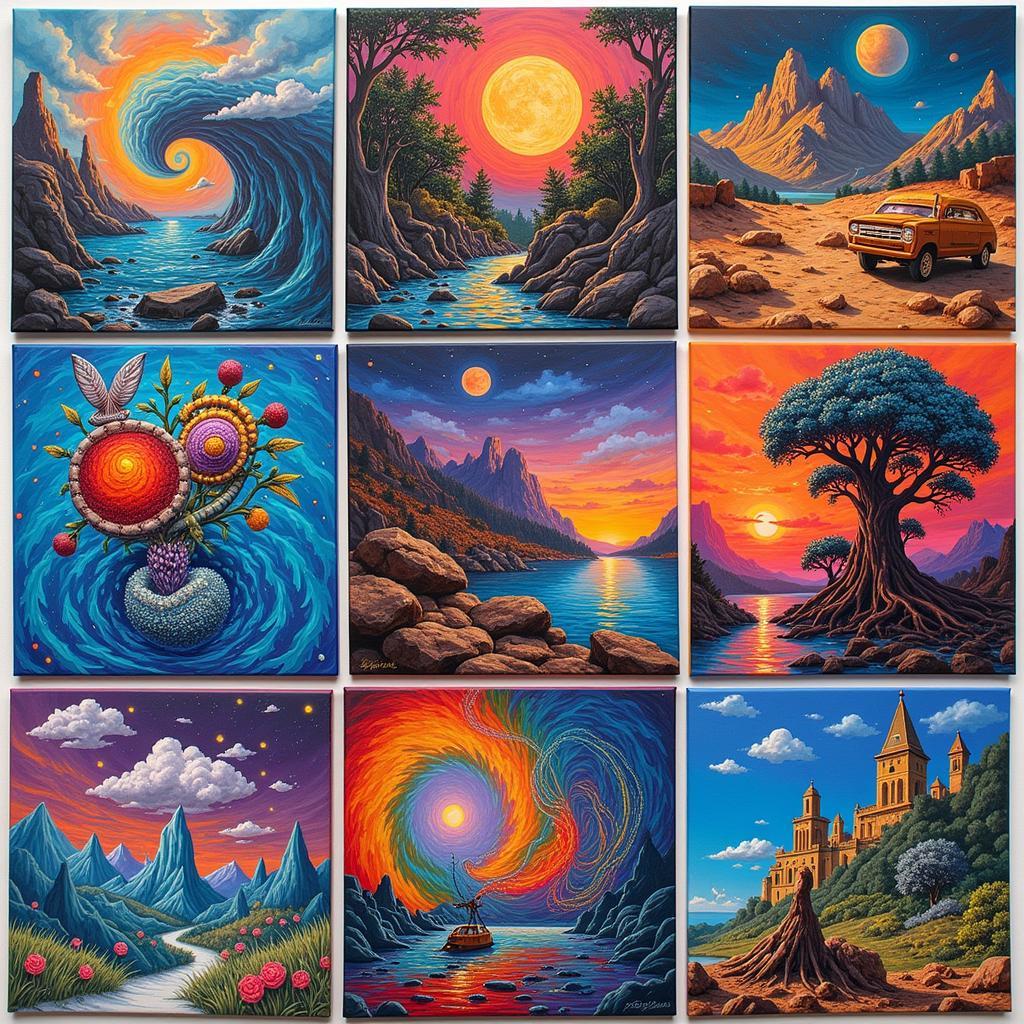Angel Classical Art: A Divine Inspiration
Angel Classical Art offers a glimpse into a world where the ethereal meets the tangible. This captivating genre, flourishing predominantly from the Middle Ages to the 18th century, depicts angelic beings in various artistic forms, from paintings and sculptures to mosaics and frescos. More than just decorative elements, these works served as powerful reminders of the divine presence, inspiring awe and devotion among believers.
Unveiling the Symbolism: More Than Meets the Eye
In art, angels transcend their literal representation to embody profound symbolic meaning. Often depicted as youthful figures with flawless features, they represent purity, innocence, and divine beauty. Their wings, typically feathered and white, signify their ability to transcend the earthly realm and act as messengers between heaven and earth.
Different types of angels held specific roles and symbolism in classical art. Archangels, for instance, often appeared as powerful warriors, their armor and weapons signifying divine protection and justice. Cherubs, depicted as adorable infants, symbolized divine love and innocence. Understanding these symbolic nuances unlocks a deeper appreciation for the intricate narratives woven within angel classical art.
From Renaissance Masterpieces to Byzantine Mosaics: A Journey Through Time
The depiction of angels in art has evolved throughout history, reflecting changing artistic styles and theological interpretations.
The Renaissance Influence: Realism and Human Emotion
The Renaissance witnessed a shift towards realism and humanism, impacting the portrayal of angels. Artists like Leonardo da Vinci and Raphael imbued their angels with a newfound sense of naturalism and emotional depth. These angels, while retaining their ethereal beauty, appeared more lifelike, their expressions reflecting human emotions like joy, sorrow, and compassion.
Byzantine Art: The Awe-Inspiring Mosaics
Stepping back in time, Byzantine art offers a starkly different interpretation of angels. Characterized by their stylized forms and vibrant colors, Byzantine mosaics depict angels as majestic, otherworldly beings. Their elongated figures, adorned in richly patterned garments, evoke a sense of divine grandeur and authority. The use of gold leaf in their halos and wings further emphasizes their heavenly nature.
The Enduring Legacy of Angel Classical Art: Inspiration for Modern Creations
The allure of angel classical art extends far beyond the confines of museums and art history books. Its timeless beauty and profound symbolism continue to captivate and inspire artists across various mediums.
Modern artists often draw inspiration from classical motifs, reimagining them in contemporary styles. From abstract paintings that capture the ethereal essence of angels to sculptures that reimagine their iconic forms, angel classical art remains a vibrant source of creative inspiration.
Conclusion
Angel classical art is a testament to humanity’s enduring fascination with the divine. These captivating works, with their rich symbolism and evolving styles, offer a unique window into the spiritual beliefs and artistic sensibilities of different eras. Whether appreciating the delicate brushstrokes of a Renaissance masterpiece or marveling at the intricate details of a Byzantine mosaic, angel classical art continues to inspire awe and wonder, reminding us of the ethereal beauty that lies beyond the realm of the ordinary.
FAQs about Angel Classical Art
1. What is the significance of angels in art?
Angels in art often symbolize purity, divinity, and the connection between heaven and earth. They serve as messengers of God, protectors of humanity, and embodiments of spiritual ideals.
2. How can I learn more about identifying different types of angels in art?
Pay attention to their attributes and symbols. For example, archangels might carry swords, while cherubs are typically depicted as infants. Resources like art history books and museum websites can provide in-depth information.
3. Where can I see examples of angel classical art?
Many museums worldwide house impressive collections of angel classical art. The Louvre Museum in Paris, the Uffizi Gallery in Florence, and the Metropolitan Museum of Art in New York are just a few examples.
4. Is there a connection between vintage catholic art and angel depictions?
Yes, Catholic art often features angels prominently, reflecting their significant role in Catholic theology and tradition. You’ll find angels depicted in paintings, sculptures, and stained glass windows in churches and religious art.
5. Are there modern interpretations of angel classical art?
Absolutely! Contemporary artists continue to draw inspiration from classical motifs, reinterpreting them in modern styles and mediums. You can find abstract paintings, digital art, and even sculptures that reimagine the timeless beauty of angels.
6. How has the depiction of angels evolved in art history?
From the stylized forms of Byzantine art to the realism of the Renaissance and beyond, angel depictions have evolved alongside changing artistic movements and cultural perspectives. Exploring these stylistic shifts offers fascinating insights into the evolution of artistic expression.
7. What is the cultural significance of angel classical art?
Angel classical art reflects the enduring human fascination with the divine and the spiritual realm. It provides a visual language for expressing faith, hope, and the desire to connect with something greater than ourselves.
Need More Inspiration?
- Explore the fascinating world of classic nude art and its evolution throughout art history.
- Delve deeper into the history of nude art pieces and their significance in different cultures.
- Discover the captivating beauty of homoerotic greek art and its influence on Western art.
- Embark on a journey through art evolution to understand the changing styles and artistic expressions across time.
For any assistance, please contact us at Phone Number: +842462573573, Email: [email protected] or visit us at Savico Megamall, 7-9 Nguyen Van Linh Street, Gia Thuy Ward, Long Bien District, Hanoi 10000, Vietnam. Our customer support team is available 24/7 to assist you.


